The Lobi
The Lobi /Upper Volta/ Burkina Faso/ are a group much written about. The German trade has settled in the area to trade their still authentic art. It is well known that the Lobi are still actively practitioners of their traditions.
Lobi ceremonial staff, female, snake, birds , whirled horns, great patina. Birds are the carriers of souls and snake have a positive meaning.
d. d 08022024; new acquisition 74 cm large antique Lobi with POhallic cap reminding of the one below
(see my article https://www.academia.edu/7310099/From_Phallic_Poles_to_Totems_a_thesis_by_Madrason_or_Leon_Coray)
5 new additions to the collection. Rare ancestor statuettes, oracle and janus bateba.
One treated agains woodworm is paperweight light, the other is alike Rodins thinker also seen as ancestors in Yombe Congo area. What astounded me is the fishgrate motif on 2 of them, rare to see a lobi face tattooed as well. And a nice kneeling bateba figure with dark patina.
The plainness and the stillness of the main carvings are striking. Almost like the old shamanic Siberic statuettes, with a bushspirit kind of face, almost like childrens dolls they appear to ones eyes. And yet the feticio, made with hands and manipulated to achieve goals by priest and practitioners is not to be underestimated. When you have seen the movie of Jean Rouche / `les stateuttes meurent aussi!` and you look at the statuary from the Lobi, you almost believe that they live, can be revived and put to sleep again, almost as if a child which had given a doll its own life and personality.
I will leave a link which leads to docs that can broaden your knowledge about them. Much is being talked about in a big fat book called Soul of Africa. Terms as Bateba and Mphuweare keys. Bateba Duntundara (Witch Protection Figure)/ Bateba Phuwe (Ordinary Bateba). M
At Imo Dara, a well known site with great knowledge on the subject I found a real good introduction into them/
The Lobi believe that the universe was created by the god Tangba, under which sit a number of deities and spirits called Thila (sing. Thil). Under these Thila are the spirits of the bush, Kontuossi, after which human beings follow. The village lives of a Lobi community are governed by a specific Thil. In addition to the overall community Thil, each compound within the village has its own associated Thil governing the spiritual and social behaviours of household members.
Villagers pray to Thila to gain wealth, cure illnesses but more importantly, to protect themselves from witchcraft and harm. However villagers cannot directly communicate with the Thila of the community or household. They must make use of altar based figures called bateba in the towns of the Birifor and thilbia in the towns of the Lobi (meaning 'wooden carved figure'; a physical representations of Thil) which act as intermediaries between the human world and the spirit world of the Thila. Once placed in an altar (be it a village altar or an individual household altar), the bateba figure becomes inhabited by the appropriate Thil spirit.
The carvers of bateba figures have no special status within the community and receive little or no payment for completed carvings (unlike carvers in other African ethnic groups). As such, this leads to a wide variety of styles, forms and finishes of bateba figures. The final appearance of a bateba figure is irrelevant to the Lobi. What IS important is that the carving depicts a human form.
There are a number of different bateba types however it’s important to note that according to French ethnographer Julien Bosc, "for the Lobi, there exists no classification of various forms and attitudes of the different thilbia [bateba]… a statuette with a particular form can signify different things depending on its owner, and the same signification can be accomplished with different statuettes whose attitudes are different in every respect”.1 Bateba figures are found in a variety of styles, sizes and forms usually indicating the function of the figure.
April 2022 new arrivals, 4 pretty bateba statuettes ol, 2 with tattoo or scarrification carvings on them.
Friction oracle?
There are three main recognised types of bateba;
• Bateba duntundara (Witchcraft protection). These include the sub-types of:
◦ Bateba phuwe (Ordinary): Used to provide the owner with general protection from witchcraft
◦ Bateba bambar (Paralysed; also referred to as thilbou gbamgbar): Used to protect the household from witchcraft and illness (i.e. paralysis)
◦ Bateba ti bala (Anatomically anomalous / janus head; also referred to as thil dokra or thilbou you yenyo): Believed to possess special powers and abilities (such as sight in all directions) due to their unusual external appearance. Used to protect against sorcery
◦ Bateba ti puo (Dangerous; also referred to as thilbou nyella or thilbou banyo): Used to block the entrance of harmful forces from the village and household
• Bateba betise (Couple): Used by single men to find suitable partners
• Bateba yadawura (Sad / mourning; also referred to as yadawora or yadawara): Used to mourn for their owners. They help ease the load of the owner’s sadness by taking on some of the mourning and sadness
Other types of Batebas identified include:
• Thilbou yo (Head stake; also referred to as Baathil): Use unknown
• Thilbou khe mounkha (Maternity): Used for fertility purposes
• Thilbou khe mambi (Maternity): Used for fertility purposes
• Thilbou fi hin (Head turned): Used to protect against enemies .
NOTE: There are various opinions and views about the name / use / function of the different bateba figures.
Distinguishing Features
Common features among all bateba figures:
• Made of wood
• Complete representation of a human with all body parts
• Highly simplified representation of human figure
• Heads usually enlarged
• Variety of heights. According to Julien Bosc there are four categories of bateba grouped by size:1
◦ Bobothila: Height <= 10 cm (used for divination and kept in a goatskin bag)
◦ Thilbou-bia: Height = 10 - 20 cm
◦ Thilbou-manainni sono: Height = 20 - 50 cm
◦ Thilbou kotina: Height > 60 cm
Sub-type variations (Bateba Phuwe - Ordinary Bateba):
• Images with no defining posture or expression
• Face seen as grim
• Wide bulging eyes
• Chest prominently carved out
• Bulging abdomen
• Usually features a protruding naval
• Figures stand upright with arms against their sides (sometimes carved free from body)
• Long arms
• Slightly bent knees
References
• 1Art et Culture Lobi: Julien Bosc
• 2The river and the shrine: Lobi art and sense of place in Southwest Burkina Faso: Cory Keith Gundlach
• 3Society of African Missions (SMA) African Art Museum: Burkina Faso’s Case by Case
Bibliography
• 4A History of Art in Africa: Monica Blackmun Visona, Robin Poynor, Herbert M. Cole, Suzanne Preston Blier
• https://www.youtube.com/watch?v=1FudG2nBGs8 A Lobi Carver of Bonko, Pale Nokabré and two works of his father Pale Hikaraté.
• Whispering Woods : The Great Lobi Statuary from François et Marie Christiaens Collection/ https://www.youtube.com/watch?v=hdriSG-A_Eo
• And of course my own playlists on tribal art and life can be viewed on YouTube/ https://www.youtube.com/user/madrason/playlists
- And my new blog/ https://madrason.blogspot.com/
- Lobi docs archive for further study/ https://drive.google.com/drive/folders/1zsWMD0Aio9RpTLdl2DobixyBGgdAmVoL?usp=sharing
Madrason is a pseudonym for Leon Coray.
Lobi carvings are often to be seen in sales catalogues from Zemanek Muenster. It is true that they are not rare, but rare quality is. They often make one think about modern artists like Picasso and Brancusi, modern art so to call. Most modern photographs of these statues are from my own collection, which I started in 2002. I found that a small budget can bring pleasure to many a tribal art collectors heart. I renounce the speculative markets with their ordinary money making mentallity. For me collecting art of Non European countries is a passion well rewarded on its own. A good friend Louis Nagelkerke, an artist and art collector provided the archive museum cards of the Lobi!
This article is purely out of passion and for educational reasons, thus non/commercial. Madrason, ‘s-Hertogenbosch 15 september 2020
Passena region

Not unlike the one from my collection
Bambara or Lobi?
Latest acquisition; Old lobi Bateba couple
Larger Lobi statuette with haircom, cockcomb
They look a bit like a fusion of the baTeke and Bayaka style
Small used bateba statuette with offering, old, great patina
Lobi 29cm Bateba janus , light wood mid 50ies
- Lobi docs archive for further study/ https://drive.google.com/drive/folders/1zsWMD0Aio9RpTLdl2DobixyBGgdAmVoL?usp=sharing
.JPG)
.JPG)
.JPG)
.JPG)
.JPG)
.JPG)
.JPG)
.JPG)
.JPG)
.JPG)
.JPG)








.JPG)
.JPG)
.JPG)

.JPG)
.JPG)
.JPG)
.JPG)
.JPG)
.JPG)
.JPG)
.JPG)
.JPG)
.JPG)
.JPG)
.JPG)
.JPG)
.JPG)
.JPG)
.JPG)
.JPG)
.JPG)
.JPG)
.JPG)
.JPG)
.JPG)
.JPG)



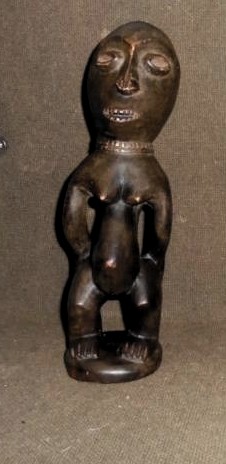





















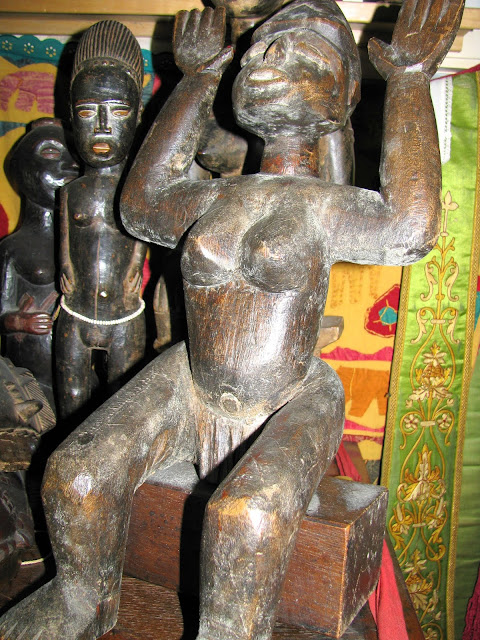

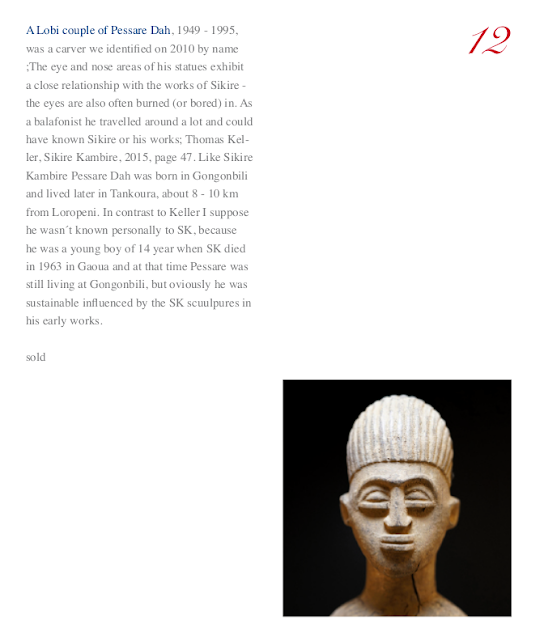














































































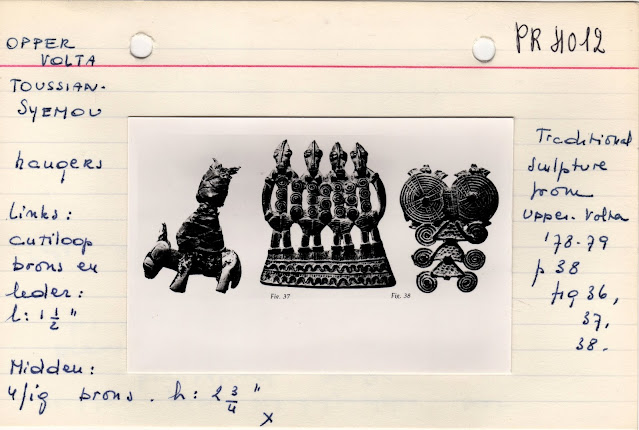




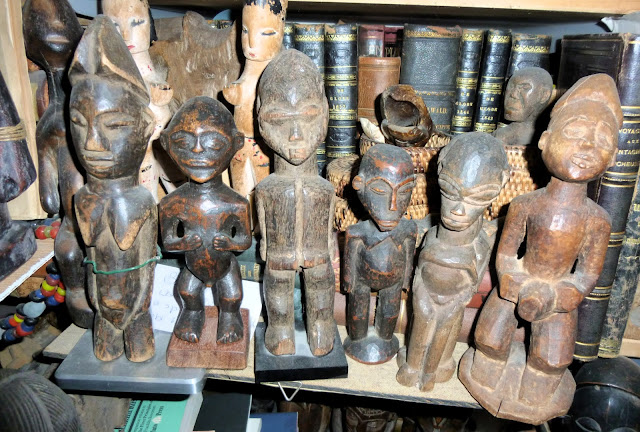









































Geen opmerkingen:
Een reactie posten